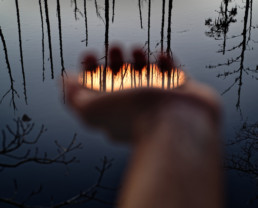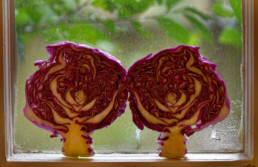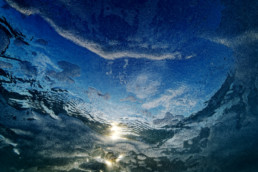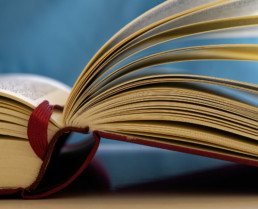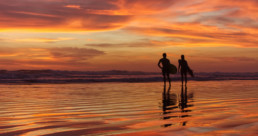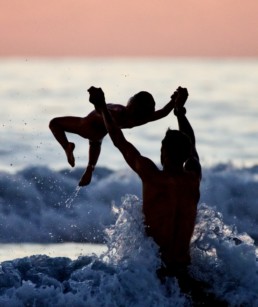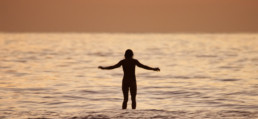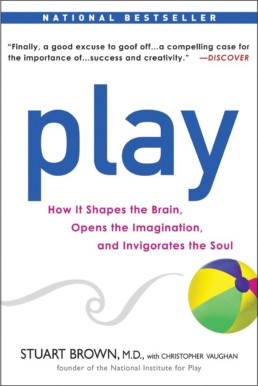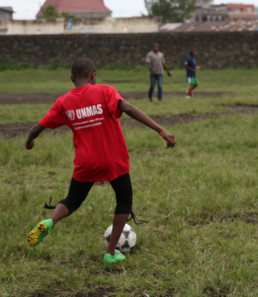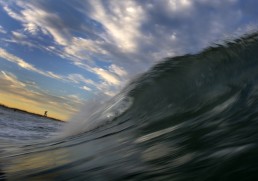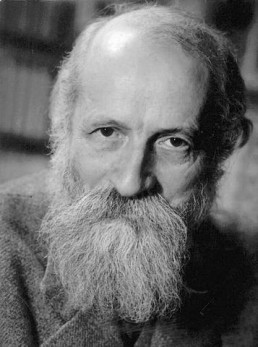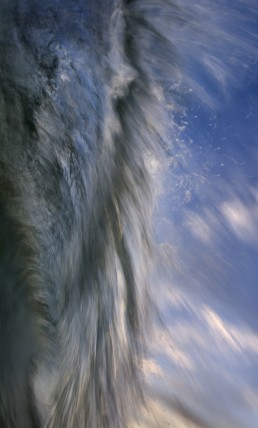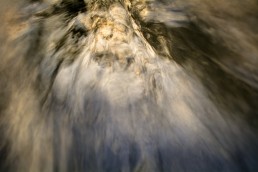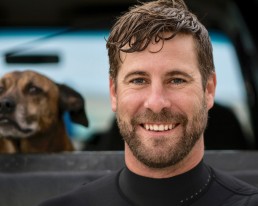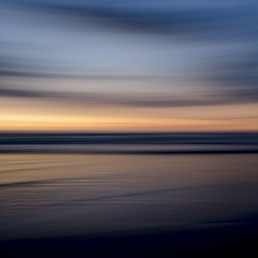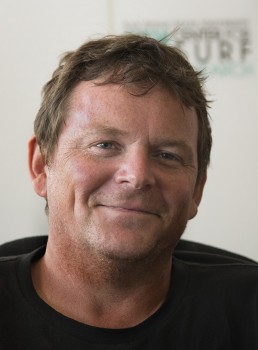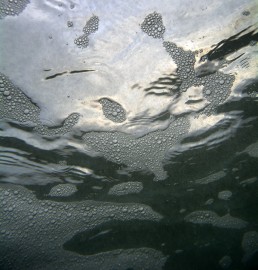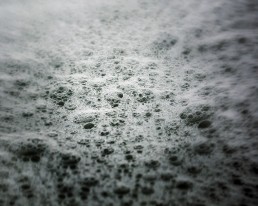Peaking waves: Nearing the end of The Plague Winter...
Last night I went out to photograph with a dear friend, another lover of light and shadow. It seemed like such a long season ahead of us when we both settled in to ride out The Plague Winter in Wilmington, NC. Now, only a couple of weeks away from the equinox, it is almost time for him to leave.
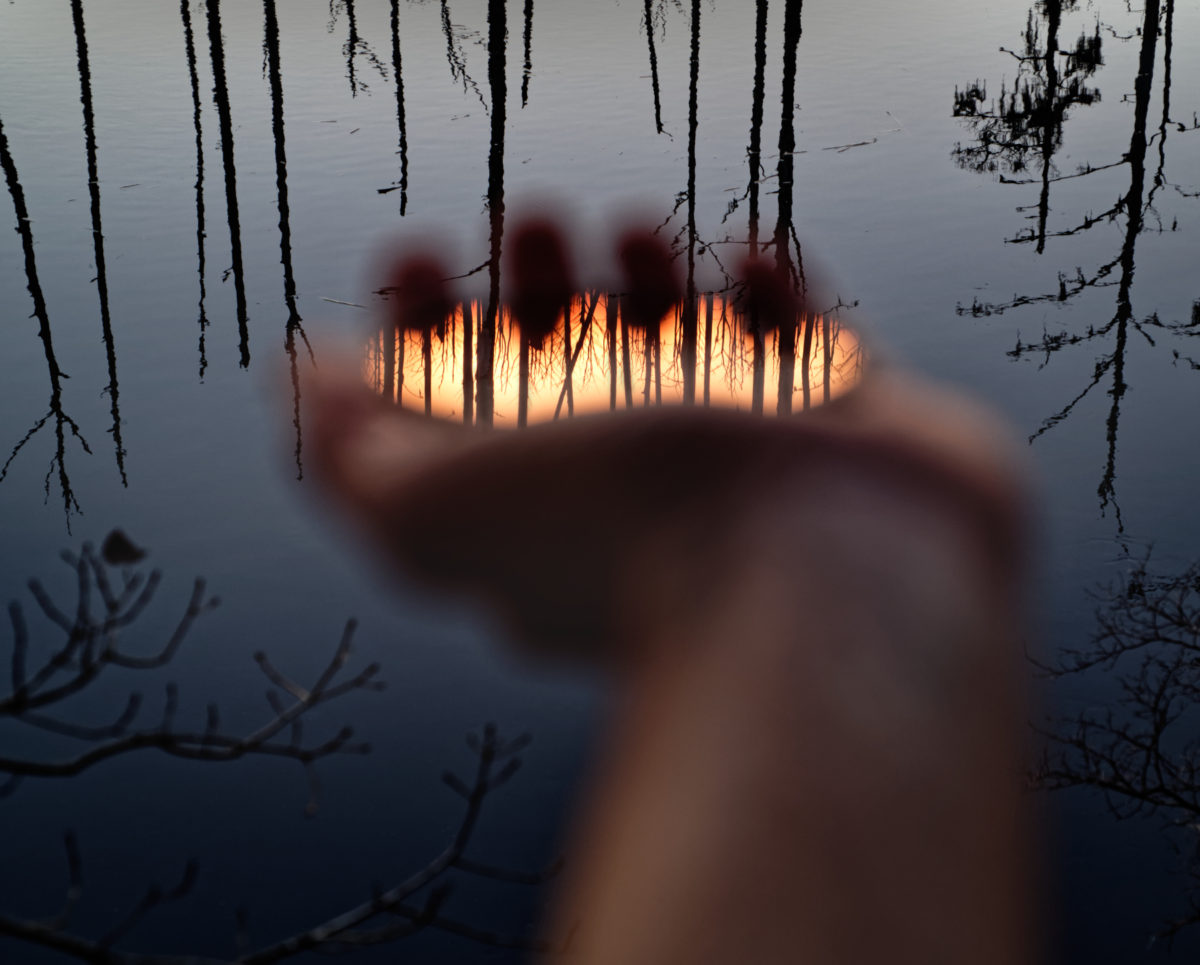
I’m so glad this winter is almost over, yet not quite ready to let it go. It’s a familiar feeling, this desire to stay here, to keep riding this one wave.
I’m pretty old. I know myself. I do not now, nor will I ever, feel ready. It isn’t how I’m wired. I’m a grabber on-er, a holder closer. But I have gotten just a little better at not fighting the losses. The waves come and then break. And there are always more of them.
Those of us still here, still inhaling as we move closer to the aftermath of this Great Plague, have The Great Gift, our lives, and an unusually potent lesson in the value of just drawing breath with those we love, of being close enough to watch them do the same.
I have a young friend who is facing one of the most painful challenges of loss all survivors have to face. This today, sent me back to the beloved and powerful teacher, Pema Chödrön (When Things Fall Apart).
She writes about our primal existential fears, and how they all arise from fear of death, from “Yama Mara.” But she sees a twist— really, what we fear, she says, is a fully lived life of presence and attention and love. Our deepest terror comes with fear of all of the loss and the awful, exquisite pain such a life inevitably means. The price of love is grief.
“To be fully alive, fully human, and completely awake is to be continually thrown out of the nest. To live fully is to be always in no man’s land, to experience each moment as completely new and fresh. To live is to be willing to die over and over again… So even though we say the Yama Mara is fear of death, it’s actually fear of life.”
By witnessing, by attending, by bowing in gratitude to the light in darkness and the darkness in light, and—even in the times of deepest darkness, when it seemed terrifying, or downright insane to do so— if we have still found a way to exist in love, then we have done what we can do.
We’ve lived.
Go here for a wonderful discussion of When Things Fall Apart between Krista Tippet and Devendra Banhart.
Love and cabbage
On the National Cabbage Day in the Year of the Plague
_________________________
LOVE
Let the more loving one be me."
"Knowing how to be solitary is central to the art of loving. When we can be alone, we can be with others without using them as a means of escape.”
~ bell hooks, All About Love
I don’t know exactly what a prayer is.
I do know how to pay attention...
~Mary Oliver
“We allow ourselves to be foiled by the vagueness of the word. After all, love requires the utmost vulnerability. We equip someone with freshly sharpened knives; strip naked; then invite him to stand close. What could be scarier?”
~ Diane Ackerman, A Natural History of Love
"Love is the only light that can truly read the secret signature of the other person's individuality and soul. Love alone is literate in the world of origin; it can decipher identity and destiny”
~ John O'Donohue, Anam Cara: A Book of Celtic Wisdom
CABBAGE (and fish)
~Cabbage: A Global History, Meg Muckenhoupt
“Give a man a fish, and he will be hungry again to-morrow; teach him to catch a fish, and he will be richer all his life.” ~Source unknown
___________________________
1.
If you’ve never encountered a braided stream, they are a wonder to behold.
According to the National Park Service, braided streams and rivers have multi-threaded channels that branch and merge to create the characteristic pattern. These sections of river “are highly dynamic with mid-channel bars which are formed, consumed, and re-formed continuously.”
I wonder what it must be like to be a fish who lives in one of these dynamic places. A watery world that is its own thing but also connected to, always and forever revised by, its relationship to the whole? What kind of piscine mind would you develop in the practice of charting a course through an ever-shifting stream whose reaches are, by definition, forever beyond, and contributing to the place you are? How would it be to know that today the islands which, to your fish-eye view, are mountains soaring beyond the top of your world, might be gone tomorrow? To navigate a topography of obstacles or hiding places that forms and disappears at the pace of storms? To live in a place where it was obvious that it, the place, and perhaps you the sentient being, are recreated anew by the luminous water that simultaneously shapes and is being shaped by the multiplicitous forces of your surroundings and your body in those surroundings?
2.
It was Sunday morning and the Zoom screen had the dozen-plus faces I’ve come to expect. Along with those expectations— the sort that can give us the closest thing we ever get to security, there is always the promise of surprise— an insight or observation, an expression in words or just in the tilt or bow of a head, or the lift or knit of a brow. So I was not shocked when the magic happened again— when both my Covid-shaped, unusually dynamic-and-static-at-the-same-damn-time day and world changed in a Zoom-y instant. Although I know to look for the unanticipated, it never fails to leave me a little awestruck, this flow from distant sources, unseen, around the bend from which these transfiguring, numinous powers mix and surge, reforming islands in my own solitary world and ,with them, my thinking and seeing…
But first I need to tell you a story of one person’s heartfelt effort and complete failure. I need to tell you what happened before, on this particular Sunday, the broom took flight, this wheel began spinning and a braided stream buoyed me to this day of revelry in celebration of a vegetable. For today, on this short winter trip from dark to dark in these United States, is the National Day of the Cabbage.
3.
It was just about a month ago when I assigned myself an essay. Ross Gay, who will return to this thought-stream soon, notes that the word “essay” derives from a French verb that means to try. By “essay” I suppose I mean, an attempt to form an ingestible portion of the gushing river of sentences that, in the last couple of years, has flooded the previously photo-dominated current of my creative life. An effort to form them into something someone else could take something from, perhaps something that might slake at least a little thirst.
The topic of this attempt?
Love.
The deadline?
Valentine’s Day.
I would be making this effort in my home on the coast of North Carolina, where I am not supposed to be in this cold month. When I decided that, for me, it would not feel responsible to travel to my usual winter home in Costa Rica, that I would remain here to, if possible, stay well and avoid getting or giving the Novel Corona Virus, I thought that perhaps I might also avoid all the viruses.
Valentine’s Day was three days ago.
I’ve read an inspiring, at times transformative pile of pages on the topic— love. The stacks of books that have become the temporary islands that channel my lugubrious COVID-time flow have included bell hooks and Valarie Kaur, Cornell West and John O’Donohue, Elizabeth Barrett Browning and Audre Lorde, and, and, and
I live by love. I love love.
But, regardless of how much I wrote and read, and wrote and thought the sentences trickling out of me on the topic have been more breathless than usual, flapping about but under-oxygenated, frenetic, turbid with all kinds of sedimentary nonsense. In short, clarity was elusive and the stream was not one anyone would be interested in drinking from.
Meanwhile, somehow, I managed to catch a cold.
A damn cold.
Its origin is a mystery as I’ve been around almost no one and been inside precisely no indoor place for months. In recent years colds have been stubborn events in my life so, after riding a wave of outrage, I settled into what this viral battle would mean for the duration— little to no surfing which, in the current Covid-crafted society, means little to no daily social contact with the beloved humans with whom I usually share my wave-riding passion. In turn, this means little to no embodied contact, period.
But because of this self-imposed assignment— an essay on love—the outrageous reality of a minor respiratory infection also meant hour after hour to swim in the braided channel of various brilliant human hearts speaking through exceptional minds as they mused and theorized, evoked and created around this pervasive, elusive idea of love. I read a small but growing pile of shifting books and essays. With intermittent breaks to go outside and see what was happening in the winter light behind my house, under a copse of trees—sweet gums, live oaks, myrtles, and a holly. These weeks of angled sunlight and cold rain have been one of the most delicious, savory episodes of mild illness and spicy inquiry I could imagine. The time of these odd Covid months, by which I mean the temporality, the sense of time and its passage, can be so long and strange and, for some of us, lonely and sad. But this month of solitary, conscious focus on love as an idea has flown by like a delicious meal I wish I could start all over again with the moment of anticipation, of not even knowing what was on the menu. It was wonderful. This is true in no small part because my friends, the ones with whom I was not sharing wave-riding passion, kept texting me to see how I was doing, whether I was ready to get back out, and give me reports on the conditions.
I guess you could even call what they were texting “love.”
As I said, it was a great month, but there was this deadline… As February dawned, my cold hung on, and my mind and heart continued to be delighted and confused with swirling vortices of evocative perspectives on that greatest human emotion. I wrote every day. But my narrative sensibility couldn’t find a way to navigate. My writing mind was not steering, not even hanging on. I flailed and splashed. The sentences coming from my own pen flew by in what felt like a roaring rush of clouded understanding and murky expression and it began to occur to me that I might not be equal to this writing task. At least not in this timeframe.
Now, I get stuck in this place all the time— lost and swirling in sentences that come readily enough but don’t, won’t adhere to any purpose or pattern. And I often look to etymology to help me get my bearings, to find how I might possibly attempt to make truth, beauty, and meaning out of words (which, as far as I can tell, is what writing means). What with the Valentine’s Day deadline looming in only a couple of weeks, I went to “February” school.
It turns out that our word for this month is only about a century old.
“February" comes from the Roman Februa which means purification or cleansing and reflects the ritual purification feast held in this month. The Welsh called this month – y mis-bach (the little month) and the Saxons called it sprout-kale.
I thought I’d found no help from etymology. But, in retrospect, this was the first vegetable intrusion into my attempt.
I realize now the love essay was a ludicrous assignment for me. It’s the wrong word altogether. Like asking an Eskimo to write about snow or a fish to write about water. Love makes for the right life but the wrong prompt with a short time-window. Failure had arrived.
No problem! Half a life-span of making art- which is to say trying to do what I’m reasonably certain can’t be done— has left me comfortable with failure. I am easily distracted by the next effort although sometimes what form that will take can be difficult to discern for a bit. Usually, eventually, the flow between shifting islands becomes apparent and I can cheerfully begin to make my way downstream, to the next attempt, and failure with just enough intermittent success thrown in to keep me hooked. But in this case that reorientation took no time at all because just as I began to let go of the Love-Day deadline, my interior life was hijacked by cabbage.
Yes, the cruciferous kind.
4.
Remember that Zoom screen? The once from which magic emanated?
You see, when the pandemic first began to take shape and we Humans of Earth all entered an unknown chapter of unknown duration with uncertain outcomes and some unhinged political leadership, I responded to a request and announced an online group. We would meet on Zoom and engage with some creators and meaning-makers whose ideas and practices might help us find our way in this time. I hoped I might help at least a few people emerge having survived but also, on the far side of this braided, disjointed “now,” come out ready to do what was ours to do.
I’d never been a part of an online community of learning, or class so I couldn’t foresee how powerful the connections would become. In retrospect, I should not be surprised. I do know first hand from many years of teaching that groups of people who dive, with open minds and hearts, into a flow of demanding and abundant ideas and perspectives, often and automatically begin to collaborate in a mysterious process of their own meaning-making and wayfinding.
Now, many, many adolescents and the adults they grow into are understandably rigid when they think about what “classes” and “learning” are for. Traditional schooling can be life-giving— like going from not being able to swim to being able to not-drown. Learning how to navigate a concrete pool is a fine, often crucial first step.
But, although it usually stretches or blows our dualistic minds to try to get this, most of life is about being the water you drink which is the same water you must swim through (and with, and against) as you navigate life’s shifting islands and unpredictable rapids. Those rapids can be either terrifying threats or great rides (or both simultaneously), depending on your mindset and prior practices. One of the practices that can help you get a great ride (or, at least not-drown), even when the current feels (or is) dangerous and the water feels (or is) murky, is living with and through art, by which I mean carefully crafted communication of what matters most.
I suppose you might even call it an act of love. Both the engaging and the crafting.
As a teacher, my go-to pedagogy to get students to think outside the box (or pool) was to literally take them outside and, there, in the woods, on the beach, atop a mountain (anywhere beyond the boxes with roofs and the ones in our thoughts) and to get us to all read some thing that some other human had lovingly wrought. And watch. And talk. We would talk about what was going on outside as if it were in the same world as what was going on in the text.
We would read and be in place. We would read as if the world humans occupy. As if humans, including We The Readers were not just in but composed of the very stuff (earth, air, water) that made us... makes us possible. To at least try to read with others as if you don’t only live in but just plain are the world of connections between rivers and lines of text and meaning flowing on pages and blood through your own beating hearts. To work and play as we found new kinds of immersion in learning, in dynamic and shifting ways of knowing.
But most of that marching groups outside of the box was with students, self-described learners who had signed up for a class, one that was usually required. Such things are certainly possible (and just as powerful) with groups of not-students but Covid would brook no such togetherness. Now a context that meant being able to sense one another’s bodies in space, feeling the same clay, water, and air was off the table. We would have to find flow without our feet feeling the rushing water of streams while our consciousness, collective and individual, bathed in whatever current of discovery we were riding together. I was doubtful. "Online community" seemed potentially, perpetually diluted. In a word, virtual. Virtually, but never quite, real.
But that isn’t what happened. Instead this online community or class or group or whatever we are, turned out to feel a lot like the many waves I’ve been frightened of, then awestruck and, ultimately and dynamically, instructed by. The most unpredictable ones— waves that I’m not at all sure I should try— are usually the very ones that leave me basking in breathless, deeply satisfied gratitude. So, in an act of faith, when we started in March of 2020, we called this group Riding the Waves.
Almost a year has gone by. We have never been together, in an embodied sense. We are all loosely connected, not more than a few degrees of separation, but we are, as a group, not familiars, never mind intimates— or, at least, we weren’t.
When we began, I had no idea where to lead us. But as we started out talking together about contemporary research on play and Viktor Frankl’s Man’s Search for Meaning, I embraced the reality that my own ignorance and lost-ness has, when honestly articulated, often proven invaluable as a creative instigation to others. So, one of the prompts we're using is to consider ourselves “cartographers of meaning” as we move through this unprecedented landscape and follow the course of this unknown stream as it has shifted and reformed around us. Terra incognita seems to imply more stability than this moment, an epidemiologically, emotionally, and politically "dynamic" time offers. I prefer to think of us as charting a course through aqua incognita.
I know a brilliant historian who says a map is an argument about what signifies.
The “we” who formed in this online group is comprised of people who have, in the global, historical context, tremendous privilege. And we are gathering at an exceptionally pivotal time. It is the stuff of history and historic change. We all have the benefit of an education and respect the power of thought, and the dynamic, shifting natures of truth and hope. Occasionally, during one of the meetings, one of us makes something like a map, an argument, an offering about what has signified for us. The rest of us are assisted if not accompanied, in our wandering. In doing this exercise in existential cartography we’ve practiced serving someone other than ourselves and transformed ourselves in the process. The rest of us learn from those offerings that sometimes feel more like incantations than coordinates. And, when we are at our best, this feels absolutely and not at all about us, the finitude of humans represented by the gathering, figures of electrons on my screen. I think it's fair for me to generalize and say we are all grateful for one another and for the whole we formed, are forming.
After all, there’s no time like Covid Time to feel the intense importance of our social ties, and by extension, of the form and function (or disfunction) of our society. To extend the old “helping parable,” you can give a man a fish or you can teach a man to fish. I suspect that parable has a sequel we need to write together, one that goes something like this:
Or you can teach a man to fish and find ways to love him while he learns how to fish, then be with him as you both begin to learn that that fish sees and knows things you can't. So then you both fall into a deep respect for and attachment (one I suppose you could call love) to both the fish and the braided, shifting stream where you and it both draw life. And then, someday, you can watch in silence awestruck reverence as the man you taught becomes a teacher of fishing and of attachment. And, perhaps, of love.
5.
We are far downstream of the first time we met for Riding the Waves but, months later, we know we have only just begun to learn from, to integrate Viktor Frankl in our search for meaning.
This winter, as one of our possibility models and meaning prophets, we have been, at a slow, dripping pace of a few pages a day, ingesting Ross Gay’s Book of Delights. Gay, an effervescent, sometimes ecstatic poet determined he would make a daily practice of writing a tiny, complete essayette each day of the year. The subject? Something that delighted him. His capacity to feel delight grew strong in the process. So, it turns out, has ours.
If you are not currently reading this book I urge you to change that today.
For with delight, comes meaning, and a clearer course. Now, let me be clear. Although we, with the help of Ross Gay and many others, are finding our ways to meaning and to developing the capacity to share that meaning-finding, as any earnest cartographer would, there is plenty of room for being lost. We often witness one another's sadness, grief, and fear. There is plenty of space for shooting an occasional terrifying rapid of overwhelm or hopelessness. On the day I'm slowing meandering towards, the one in which the magic vapor of new meaning radiated from my Zoom screen, one of us was, in fact, having such a moment.
Solitude is good. Time alone is crucial. Reflection and rest, all good things. And warm sunshine in excess can burn the hell out of us. Too much of a good thing can, after a point, take on Biblical plague-proportions.
In this woman’s CSA boxes, the result of committing to support a local farmer year-round came huge wave after relentless wave of cabbages. The cruciferous kind. The accumulating vegetables seem to form an impenetrable, flow-stopping dam.
She was talking about herself but the magic, the alchemical whatever-this-is that keeps happening as these beautiful heartminds interact with one another through our technologies, was almost immediately palpable.
I wish I could tell you that some plot-worthy thing then happened. It didn't. We did not talk about the cabbage for long, although a couple of people did immediately share their favorite cabbage recipe. No problems were solved. And, if they had been, that would have been engineering, not magic. The transformation was subtle but existential. Like an adjustment of only a few degrees that dramatically alter the outcome of a long journey.
I don’t think any of us knew at the time that the indigenous Saxons called this month, February, in which we celebrate (mostly romantic) love, kale-month. That a surfeit of cruciferous beings in our midst might represent an ancient relationship, an eternal dance, another kind of love, a dance in which we are only the latest expressive embodying-forth... Well, I think it was something along those lines that happened in that tiny shift in our braided stream of consciousness. It was as if we all knew we had tripped over a place that needed a mark on the path, a signpost on the banks of the shifting forms.
On our way to efficiency or productivity (or some boxed-in version of love), it would have been an easy moment to overlook or denigrate as insignificant, that story about overwhelming abundance in darkness.
Encountering that dam of piles of cabbage was about coming to feel the gossamer web of being in and of a place from which you can't escape. Perhaps, in part, because you are it. And it was about nourishment begging for flavor, to be made palatable with the spice of connection to place, to farmer, to food, to water, to one another across the miles and the generations. It was about spicing up an offering for those of us who are malnourished, if not downright starving. And it was about ways we could reconfigure what is on offer, even if the task, the pile of things that need to change, is overwhelming.
One of the group pointed out that kale and cabbage (and broccoli and collards and Brussels sprouts) are all different varieties of the same species, brassica oleracea. They look completely different from one another.
We use different recipes to understand how they should come out.
But they are the same species.
Yet another subtle but profound shift.
Again, I wish I could tell you that the earth quaked.
That the Zoom Screen suddenly turned iridescent.
That lightning shot from the keyboard.
But it didn’t.
Nothing happened.
Everything happened.
There was no shift in any of my five senses.
But the water in which the body in which those senses gather information was altered by the telling of the tale of too much cabbage and of the artificial barrier we've drawn between cabbage and kale, Brussels sprouts and broccoli.
What I can tell you is that there was no longer too much cabbage. There was just enough for the monolithic CSA box to become something other than what it began as. It had become a delight.
I don’t know if we would have found our way, If I would have found my way as the group’s purported guide, or even been able to recognize the moment without Ross Gay. Without that Book of Delights. But, here’s the thing, I didn’t have to. Because he did what he did when he did it and we are all harvesting meaning from the bumper crop he sowed. We had plenty of steam to navigate this obstacle and to turn it into something else. The cabbage dam crumbled almost immediately. The woman broke into a large smile on my screen as she told the rest of her cabbage tale. The smile was more contagious than any variant this Covid monster can invent.
6.
So, I spent the last couple of weeks with this cold trying to stay warm and dry, patient and restful while the beautiful cold ocean waves broke without me. I was still reading about love, still not really writing about it while writing about it, but gave up completely on meeting the deadline for the essay on love. Instead, I opted for the lifeline of living with a cabbage.
Literally.
I placed a single purple cabbage on a ceramic vessel, a gift from one of the humans in the group.
I looked at it.
A lot.
Occasionally, I photographed it.
One day, as I was staring at the outer layers of these crumpling, curving, undulating waves of this mysterious cabbage something startling appeared in the background. It was a bird-like fluttering but gigantic, much too big to be a bird. Then the heat pump outside the window switched off and I could hear them. The giant-seeming flapping thing wasn’t a bird, it was hundreds of them. Robins to be precise. They were converging on the red holly berries on the tree at the edge of my yard.
I looked from the cabbage to the birds and back and forth and back and forth again.
I went outside, left the box, and was overwhelmed.
So many birds!
They were so loud!
I walked up the block.
Every yard had hundreds of birds, flying, pecking, calling. I hurried back to the house, put on half a dozen layers, grabbed a camera, and spent half an hour still actively not writing about love but out there, in the yard, as close to the holly as I dared to get, with the birds in front of me and the cabbage just inside the window at my back. So many birds. It was almost frightening. Almost. But, although my heart pounded and I kept catching my breath as the birds dove and ate, fluttered and sang, the feeling was of watching something mountainous form, knowing it would not last.
Then, all of a sudden, someone nearby banged on metal with metal, three loud clangs.
They all left.
Every last bird, gone.
My heart slowed.
I tried to settle with the feeling of what I'd just seen.
Annie Dillard, describing fecundity in general and dragonfly nymphs in particular, calls them “insatiable and mighty.” That is what I encountered in that yard with the cabbage at my back. At least in the context of my life, it was the most insatiable and the single mightiest form of the lingering wilds of the urban backyard.
I will never forget that feeling. 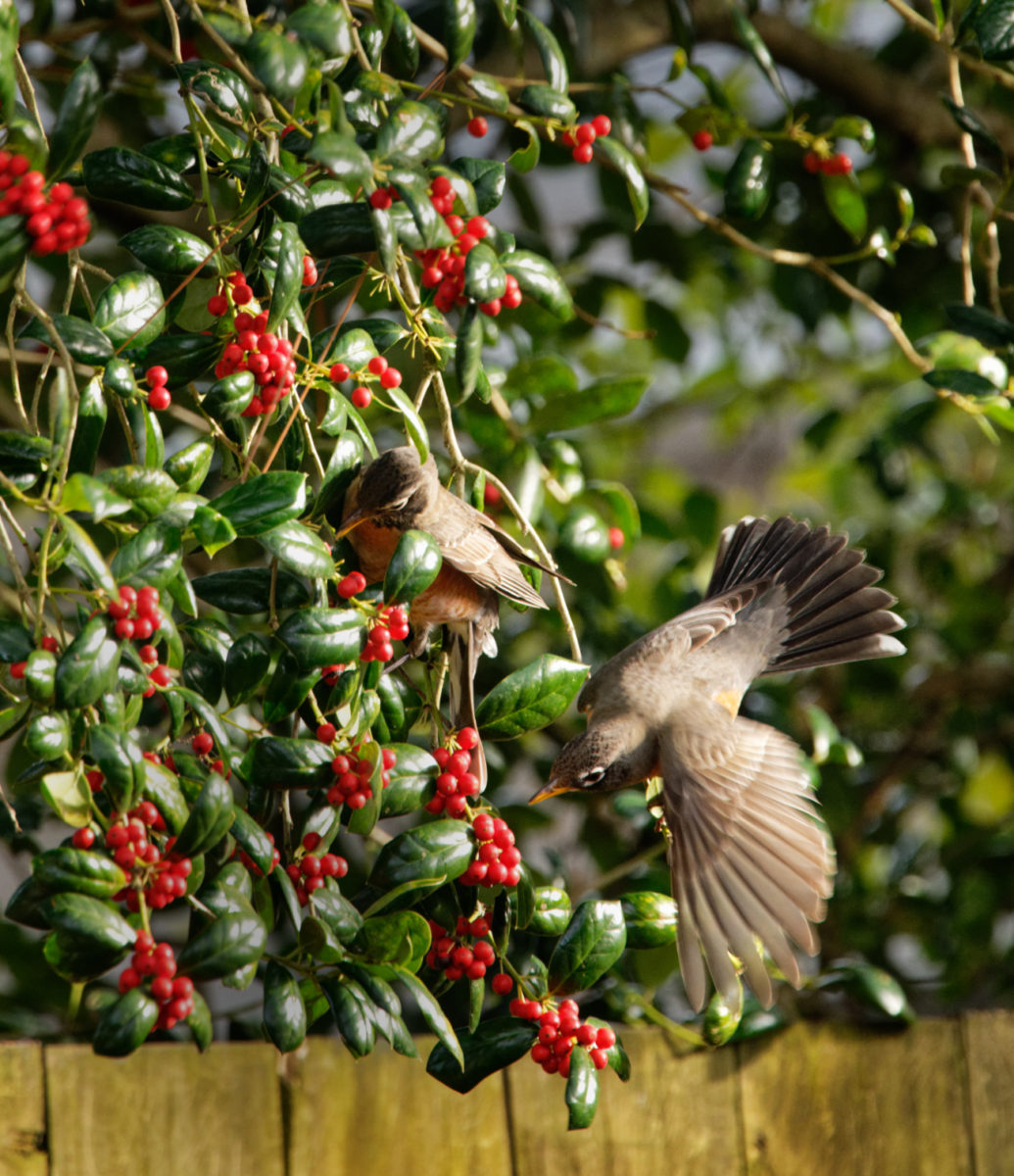
If it weren’t for Covid I would not have been here in North Carolina.
If it weren’t for the cold I would not have been in the house.
If it weren’t for the cabbage head, I might not have been at the window.
And if I had happened past the window, I’d have likely moved away, gone back to the desk, my senses absorbed in the powerful magic of screens and sentences, words and pages, and the mesmerizing boxes they can form.
But because of the delicate but powerful draw of Fibonacci’s geometric beauty, because of the cabbages slowly desiccating outer leaves, I was there, looking outside for what had startled me from my focus.
Birds, sure.
But something the birds summoned me to.
Something we are both a part of.
Something I suppose you might even call love.
7.
After that afternoon, it seemed like the right thing to do to get ready to eat that cabbage. I had been a decent student of its teachings and was now ready to metabolize them in a new way. The birds had arrived two days before the next Riding the Waves meeting. So I would slice and cook and eat it the night before we met again. Its chemical compounds, its magic potions would be feeding me, in/forming the energy I brought to the group. If that isn’t a spiritual moment of deep love then I don’t know what is.
But, before I ate it, I would attend to it. Look at it. Perhaps delight in it. And, if it seemed right, make some photographs and write some sentences.
Our appointed hour came.
We met. We talked. Each of us calling in from the places we live, the clay and water and air from which our bodies emanate. The places from which, with the help of, among others, cabbage farmers, we draw what we need in order to keep, for now, meeting in this disembodied format.
We are keeping one another company as the mountains shift in the gushing, uncontrollable forces around us. But we are also part of the reformation, the flowing currents of one another's thoughts and lives.
Not much and everything that matters happens in these meetings.
Now, after a year, we know one another so well and not at all.
We have spent such significant time with one another and almost no time at all.
We have shared so many experiences and almost none at all.
Virtual?
Perhaps.
But also as real as life gets.
I know this possibility would not be on offer without pandemic, without this technology, without the political and climatological, and social threats and the openings they bring. Without the necessity, of embracing being lost as we revise our collective and individual courses, we would never have the opportunity of rediscovering what it means to be found.
Wayfinding.
Cartographies of meaning.
Zooming.
I suppose you could almost call it love.
So, although I failed utterly, for the moment, to write that intended essay for Valentine’s Day, I can without hesitation and with nothing but love in my heart write to the world, that I hope you, you individual human reading this, have a beautiful, meaningful, and love-filled National Cabbage Day!
Further Reading
Cabbage: A Global History
Meg Muckenhoupt
https://b-ok.cc/book/3696238/22c172?dsource=recommend
Further Reading
Cabbage: A Global History
Meg Muckenhoupt
https://b-ok.cc/book/3696238/22c172?dsource=recommend
The Darkness (and Light) of Unknowing
“Three-fourths of philosophy and literature is the talk of people trying to convince themselves that they really like the cage they were tricked into entering.”
~ Gary Snyder
Taking place.
It’s dark.
Really, completely dark.
I can hear and feel the chunky gravel and its pointy rolling crunch underfoot as I inch my way down the long winding hill of the driveway. So, for a fleeting instant, I am almost, as they say, all ears— with a liberal dash of sole-sense coming up from the tentative, searching feet that have, at least during these first few yards, kept me from tripping over some unseen thing. The declivity, the palpable reality of the possibility of walking, and perhaps falling, downhill, feels exciting. Committed to wave-riding, I spend less time in this rolling and rocky country, and am up for a just few days from the flat wide Coastal Plain where the surf breaks. I fall down in the water all the time, but down is a different direction when you’re flying along the face of a wave with water to welcome you in. The surface my feet creep along now is impenetrable, hard, and not fit for human entry. The welcome I feel from this land is, in this sense only, purely superficial.
In addition to the twenty years I’ve lived here, at least some days and nights of the year, part of what makes this hillside feel like home is that I’m not so far from the subdivision where I grew up. The place where my first memories of exploration and discovery formed in relation to the fractal and chaotic shapes of the trees and branches, riffles and creek banks, and the rolling hills with occasional rocky outcrops that seemed to emerge from an enchanted underground world that began just behind our brick ranch— a house defined, as they all were, by the Euclidean predictable. This day’s darkness is one of the first subfreezing nights of the year here in the North Carolina Piedmont, in the upper reaches of the river basin where most of my 20,000 odd days (and nights) as a human in the world have taken place.
It’s a beautiful phrase.
To “take place.”
I’ve spent my plentiful awake-in-the-dark hours during these long nights of this 2020 Solstice season trying to learn from the darkness of the places, and of this time, instead of automatically obscuring it with electric (or electronic) light and all that the light brings with it. Instead of treating darkness like a not-place between real places that are lit, like an interstate, that needs to be sped through to get to the destination, I’m trying to feel the reality that darkness is crucial, even if it is a passage. So, after all, are lit days. But, especially this year, darkness feels like it might be a place of richer inception, even conception. Births, and deaths, the end of a love story, or the beginning of one, always take place in some form of mysterious darkness. Like taking tea, or water, or a rest, it seems there might be a way in which that phrase, “it took place,” is a verbal nod to the idea that the separation between a life and the place of its unfolding, between time and space, is not as straightforward as it might seem. Some combination of the nature of our human senses and the ways our story-telling language and habitual thinking distinguish life and place (character, plot, and setting) from one another encourages us to treat them as wildly different ways of discovering- like pipes emptying into a lake, rather than currents mixing and swirling in an ocean, forming one inseparable body. In our culture, we are dominated by a chronological, here-to-then and never back again, linear time-sense. And we naturally favor the bandwidth of perceptions that comes through our eyes, our sight. Most of our brain is busy working through incoming visual information most of the time. We definitely have a prejudice in favor of light. We kill darkness before knowing what it could teach us, what it intends for us. And so the ancient parts of us that know what to learn from it (Stillness? Vulnerability? Awareness that our eyes weren’t built to see all there is?).
I, a photographer for life, am a case in point. The contraption I’m carrying as I halt down this hill, obscured by a beautiful blackness, is screwed onto a heavy tripod so it can be still while it receives the light of the never-still universe, the visible kind of light, that is, the sliver of spectrum that we humans can see. The photograph will, if I’m wildly lucky, merit the attention of the other humans who take a span of their precious sacred life-time to look at the image these visible wavelengths will make from 0s and 1s. If it feels whatever brand of right-and-true I’ve come to look for, I will send this image through screens that stream light to people’s eyes in the very spectrum denied to me now. Perhaps it might spark a few, or even one to go out (or in) to the dark. I know in my brain and heart that there is some of that visible light out here with me but, at midlife, one of the alterations in vision I’m learning to appreciate is that my eyes are far slower than my feet in the passage out of a well-lit room into a moonless night.
Now, after 20,000 nights, darkness is more abundant with the gifts of longer study in the lessons of not-seeing, of disorientation, and of unknowing. On the other hand, falling down (the hill country kind of down) onto gravel offers a lesson I don’t need to learn again so the cautious crawling steps continue. I move by feel and memory of this place (it must be time to wind left a little… now back right). And I look up and down into the thick ephemeral darkness, the nothingness-for-now. This fleeting not-seeing is a delicious gift that won’t last because I’m really looking for the things that will allow me to steer without thinking, to become less aware of the impacts, every single one of them, of my feet— each one, on the ground—this ground. I will soon once again take them (and the ground) for granted. I’ll start to live the journey and not each step as I head for the vantage point, the viewing place I’m after. I hope it’s an honorable perspective, that place I made note of last night, halfway up the next hill where I thought I saw a possibility, a chance to take a photograph that might point toward the darker kind of knowing. In her beautiful book, Hope in the Dark, Rebecca Solnit writes that we often automatically associate darkness with the tomb and let it scare us, as death tends to, not with the womb and all the hope of gestating future life. In doing so, we blind ourselves in ways that 20/20 vision can’t help with.
This bit of the Piedmont I’m currently blinded to gets its name because it is foothills to the ancient, worn Appalachian Mountains. This particular neighborhood in the woods has felt like home for a long time and, although most of my life takes place on sandy ground, this is and, I suspect, always will be, home. It’s a strip of land between spreading urban centers that is still just barely rural enough to have a time of day that feels like night, especially now. The slimmest sliver of the moon, nearly new, set just past sunset. So now it’s as dark as dark can be here, with uncountable sodium vapor lights a couple dozen miles in either direction.
Many small steps later, as I feel the hill of the driveway flatten out into the road, I can finally see stars. Slowly, slowly, the places that remain dark, the ones I can’t see those thousands of lit points from the past, begin to define themselves as the branching gestures of the trees who live with me here, in this oak hickory forest. To me they are not usually oaks and hickories (and beeches and cedars and sourwoods) in the same way my other intimate loved ones (the human kind) are not usually their broadest categories. My mother is, after all, certainly a woman of European descent but I don’t go around categorizing her as such in my mind- she’s just Mom. Instead, these trees are this long-loved one with that expressive shape (doesn’t it look like it’s in a state of exuberant praise?) and that one over there with that evocative form (have you ever seen a more determined posture?). And then that one (look how considerate it is, holding its crown in its own space, reaching for the tree next door while leaving it exactly as much room as it needs to grow).
This place, the one in which (from which?) my life events have taken place, is one of the greatest abundance, a neighborhood of towering privilege, to be sure. Here I am fortunate enough to share time and place with the beings whose shapes and textures and calls and snorts I have ingested into memory. It and they transform the present from a piece of linear time into a big country, an expanse without borders, filled with a kind of magic. This sort of woodland, the branches now newly bare, used to feel like it was full of giants looking down at me. And now, in this coming winter of the Year of the Plague, there have been so many books (Braiding Sweetgrass, Hidden Life of Trees and Mycelium Running) and shows (episodes of The Crown, repeated), more social outings walking than sitting, and more time in the places that don’t require planes and crowds of people. So, much more time to be with these long-loved ones. The additional time in these woods of home, through the spring and summer, and now, headed into this darkest of dark winters, has opened me up to the possibility of trees that seem to be speaking, who might be holding forth with a poetic Answer Which Is Really A Question– an expansive, open one, only lived, never answered. Just because they ask in a language I can’t hear, doesn’t make it less true or crucial. I don’t know if I’m listening well but I do see that now, with branches newly bare, their poetry is written with such spare elegance, all dressed in the arboreal equivalent of formal-wear, showing off their fractal glory, dispensing their most practiced, most sophisticated teachings about how the shape of a small acts replicates on a larger scale. They sing the songs of this theme slowly, over years, in a voice from above that sounds beyond my vision-heavy expectations of The Beautiful, stripped of flourish or flower, but with the clarity, the ancient authority of the anointed. This place, this home, is one I’d hoped to have already left by now. I was supposed to be somewhere warm, a place I have come to know as a second home in a jungle village on the northwest coast of Costa Rica. Because in addition to not being able to see so well in the dark, I have become less able to endure the cold waves of winter for as long as I’d like to be surfing every day.
At least, that’s why I first went to Costa Rica. Then there were, there are, all the reasons that came into focus as I kept going back. For one, it is a place where there really is a night. The development hasn’t reached the point of erasing the dark so, when you step out from the jungle path onto the beach, the stars almost knock you over with a wave of seeing and instantaneous expansion that makes you feel both tiny and part of the hugeness. It looks-sounds-smells-feels something like a sudden crescendo in an anthem rousing you with an irresistible calling about what you should now do with your life. And then it builds even further, this music about where your life is taking place. Perhaps the bounding, limiting walls you’ve erected in your light-time thoughts aren’t as close as you thought? Or as high? Perhaps your small acts of love and vulnerability might replicate on a scale you never imagined possible?
In other words, I was supposed to be in a place where I don’t have to work very hard to remember to look up into the darkness. And I don’t require discipline to look down into more darkness, the jungle paths that, I hope, offer safe passage between the many, many slithering, skittering, sleeping intelligences whose place-from-which-lives-take is in that tangled green of never-ending tropical growth. Looking up into the darkness-and-light of sky and the total darkness of a teeming forest all around is something we are losing or, perhaps, have lost. Most of us live in places where the night sky has disappeared, retreated. And, in what strikes me as a particularly significant upending of the ways we evolved and who and how we know, we now look down into cold electronic light so habitually that we have lost the sense that down and darkness can go together in the most instructive ways. Didn’t we, at one point, greet the darkness with fires? Fires that we then gathered around to talk story to one another, to join and recreate our interwoven threads of ourselves in place? Didn’t the light we looked down at in the dark bring us comfort and connection, rather than the separation and fear we so often encounter in our handheld lights-in-the dark? Firelight is also engaging and powerful but it’s a kind of light that comes with immediate, bodily understanding when it burns us. What if, instead of just looking at these powerful, lit portals to human knowing and doings we went, even just with our wonder, far enough down, there, beneath the ground? There would be a lightless place we can easily believe is there. It’s a place whose heavens we can feel with our feet and know that it is both teeming with and crucial to life. It’s an invisible place that holds our ancestors, and the mineral seeds of our progeny, a place where trees talk to one another, and care for one another, a place where all we know and love comes from and returns. And it could help us hold our longer memories, the ones we need as animals, as a species, as embodiments and stewards of our habitats, the places from which our lives take their livings. It’s a darkness of inherent meaning, beyond our senses and mostly just beyond us, and therefore, a source of mystery and, possibly, of faith. A place where something as ordinary as an occasional rocky outcrop, an emissary of the underworld, might once again enchant our days and nights. We can’t reflect on what we can’t see if we never open ourselves to the not-seeing, to the darkness.
But, it’s the Solstice time and I am not in Costa Rican jungle, where I’d expected to welcome the darkness of the longest night. This year, like many of us, I have decided to heed the public health advice and not travel by plane, not go south for the winter, not have a life that takes that place into its growing sedimentary layers of memory, into the having been-ness of its never fixed self. It is, of course, sad for me but, surprisingly, the sense of impending doom I generally feel when the water temperature drops is not the stiffest challenge. That turns out to be missing the other humans with whom I share so much passion for the warm waves, the green water, the jungle, and dark nights full of stars. But missing precious humans carries its own lessons and I am working on being a receptive, curious student.
So, this year I will be mostly back and forth between my usual Southeastern U.S. places, up and downstream in the Cape Fear River basin. Perhaps, after she gets her vaccine (but before I get mine?) I will drive to Florida to see my mother, who lives independently and hasn’t had real human company since before the vernal equinox. Like the rest of you, we’ve been Zooming and FaceTiming like mad but, well, you all know. You can’t simultaneously be on the Zoom and feeling the vast dark of night, of all there is, together.
All you can really share is human language with its best possible virtual embodiment in facial expressions and gestures. As thankful as I am for all of this technology right now, it makes me keenly aware of how important it is that at least some of what we share with our human loved ones, with our partners and friends, teachers and students, colleagues and neighbors take place in the more-than-human world. At its hard-won, rarely achieved best, our language is clear enough that it becomes a facet of a much more complex, indecipherable truth. It’s a truth beyond what it means to be a smart or wise or even visionary human. If we are honest with ourselves about what it means to be us, we know even our truest truth isn’t whole and never will be. Although it can reflect our visible spectrum of knowledge and feeling with its own awesome clarity, we lose something essential to being human when we only use our language and the light of our learning only to retell what we are told by ourselves. One way we repeat our own knowings and miss out on the mystery is by discerning what we feel and learn from being in the places where the very built and lit environment inevitably tells us what and how to feel, whether we realize it or not. It’s what allows us to read or watch The Crown late into the night but it also makes the dark a not-place between places. When we don’t take that elixir of mysterious, life-giving limits, of right-hereness, we weaken our capacity to inhabit, perhaps even to learn from and love, not just night but all of the cold darkness of life. When we don’t have a chance to speak or stay silent in a context, a place, a time that connects us to our not-knowing, and not-seeing, to how dark and big and, yes, after we let our eyes adjust, how light-filled the surrounding darkness the night sky can be. When there’s no room in our world to sense the other facets of animal, plant, mineral sensing and knowing, well, then we lose any chance of feeling whole, of knowing wholeness. It is its own kind of dis-ease. My own hope for this winter of so much hardship, so much sadness and loss, fear and denial, anger and outrage, is to be able to spend more time learning from what I can’t see and settling into not knowing what I can’t know.
I hope you all have a mysterious, beautiful, and healthy Solstice.
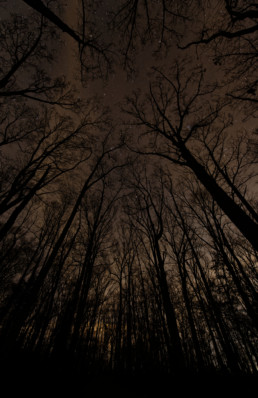
An Online Opportunity to Create Meaning
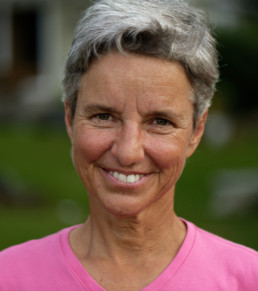
My name is Maia.
This is an invitation to join me in creating a virtual community of inquiry. We will meet on Zoom beginning on September 28th for 6 Mondays to discuss the ways some beautiful ideas could help illuminate and inform our lives in this moment. As our conversations unfold over the course of our 6 meetings, we will have a chance to find and create perspective, to connect and reflect, to deepen and revise our seeing as we ride the waves of the current time.
About waves: I love to surf. I love to be in the ocean because I feel most connected there. But, when the pandemic began, for awhile, I could do neither. And what that taught me was that, really, what I love is to love. And to be and feel fully alive. Riding waves is exquisite. But, offering what I’ve learned in the waves (and a lot of other places) to other humans, as it turns out, is even better. If this experience seems right for you, please join in!
Click here to access the Google Doc that describes our endeavor in detail.
“Everything can be taken from a man but one thing: the last of the human freedoms—
to choose one’s attitude in any given set of circumstances, to choose one’s own way.”
~Viktor Frankl
If you know you would like to register, you can do so here.
Our Scheduled Meetings:
Sep 28, 2020 5:30-7 PM*
Oct 5, 2020 5:30-7 PM
Oct 12, 2020 5:30-7 PM
Oct 19, 2020 5:30-7 PM
Oct 26, 2020 5:30-7 PM
Nov 2, 2020 5:30-7 PM
*Eastern Time
Playtime: Part 1
The changing circumstances of a dynamic, shifting environment of moving water and gathering or diminishing light… these periods of peak change are always an exercise in healing my frayed American relationship to time. Time is, after all, both the one material on which all my other endeavors, hopes, wishes, and lessons depend for their existence and the medium in which they are rendered.
A few nights ago, I walked the short jungle path from my shack in Playa Guiones, Costa Rica to photograph in the day’s last light on the crescent shaped, white sand beach. As the scene grew redder by the passing minute and sinking sun, I watched a boy, dangling in the air facing the incoming breakers, held up by his strong young father’s hands. As each line of whitewater reached them the man swung the child into the wave in a dense cascade of spray, kicking, and laughter.
Last night, during a different sunset shoot, I saw two young girls scramble up a 5-foot rock wall from a clear tide pool. Atop what must have felt to them like a precipice, they reached for each other’s hands, then jumped. Crescendos of laughter lent cadence and rhythm to both their fall and landing. They plopped down and dug into the sand to scoop wet hands full. Flinging sprays and globs of sandy muck onto the rock wall and each other before bouncing up, they commenced a new cycle of climbing, jumping, flinging, laughing.
This morning, during sunrise, I rode faster, steeper waves than I would have dared when I first arrived here in Costa Rica a couple of months ago. Working hard to choose fun over fear, I paddled over the edge of one particularly large wave and, as I felt my feet find the board, I heard a hoot of encouragement from a young, male Costa Rican surf instructor. When kind of exchange happens I often feel a comforting happiness swelling the thrill of the ride from a deep, primal place, as though I’ve achieved some kind of tribal inclusion. Although unaware of the passing minutes, I spend a lot of time smiling out in the sun and have a world class wrinkle tan to prove it. I have surfed every day my energy allowed and for every second I dared to. No one had to suggest it was a good idea, nor did it take any will-power. I do wear a watch, a chronometer, to keep myself accountable to physical limits adrenaline and just so much fun might tempt me to ignore.
It is easy to be “disciplined” about “exercise” and put up with the adversity in the line-up (the occasional pummeling by whitewater, the risk of a crowd with many beginners, the exhausting nature of the endeavor) when there is the hovering promise— but never a guarantee— of sheer, unadulterated joy. As a matter of fact, the difficulties and occasional fright I feel surfing lend dimension to the bliss and turn it into a sacred, instructive kind of play. Perhaps the same is true for the swinging toddler and the jumping young girls? One thing’s for sure, none of us is counting the minutes.
The changing circumstances of a dynamic, shifting environment of moving water and gathering or diminishing light as the sun crests the mountains or sinks into the sea— these periods of peak change are always an exercise in healing my frayed American relationship to time. Time is, after all, both the one material on which all my other endeavors, hopes, wishes, and lessons depend for their existence and the medium in which they are rendered.
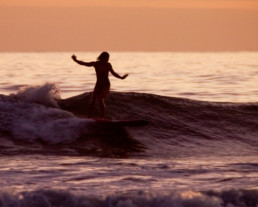
Looking around at the people on this beach, each in their way being playful, it seems we can feel time in our own bodies. We can know the reality of ephemeral happenings lived as we evolved to live them, immersed and fascinated by the world we inhabit and our unlikely existence as its sentient manifestations.
Sunsets and rises are a part of the day when the unidirectional arrow of time feels particularly speedy. Looking around on the beach with waxing or waning light, the planetary movement that gives our days their time renders each elapsing moment of life visible. Somehow this acute awareness of life-time passing never feels stressful and is often inspiring. I wonder if this is true because, at that beautiful hour, the lived experience between blindingly bright and blindingly dark is fleeting and so packed with visible change? It’s a kind of vision that allows us to lose track of the chronological minutes and feel time in the form of moving bodies of sun and earth, light and shadow, deepening or diminishing darkness. Looking around at the people on this beach, each in their way being playful, it seems we can feel time in our own bodies. We can know the reality of ephemeral happenings lived as we evolved to live them, immersed and fascinated by the world we inhabit and our unlikely existence as its sentient manifestations.
Something I’ve learned from watching the people I’ve guided into similarly playful, awe inspiring, sometimes challenging experiences is this: so often they lose track of what we usually think of as time. They emerge into some other deeper awareness of life’s steady, simultaneously cumulative and erasing movement. Each experience takes its rightful place as both a new moment lived and a time forever passed. It’s a way of sensing the contradictory nuance of how brief and full our life time is, or can be, if we cultivate our capacity to show up for it. We love economic metaphors so perhaps we could become more full, authentic participants in our time if we move from spending time to paying attention. This kind of attentive, body-grounded presence and the time perception it allows is a passage, like in music or literature, that moves you towards a concentrated capacity to sense life and the light that illuminates it. Then it becomes a passage, like a journey to another realm of feeling and, with practice, of knowing. I find this sort of ontological clarity and orientation, a creaturely comfort in physically being in one’s time, is most often within easy reach on the beaches I gravitate towards to play and work during these transitions into and out of the well-lighted world my diurnal eyeballs evolved to navigate.
And, at least here in Playa Guiones, I’m not alone. Sunsets in this coastal village are community playtime. People come out at this time of day to talk, to splash, meditate, dig, toddle, and crawl. Some of us come to surf or just to watch this display of time’s movement and be inspired and energized by it. At those moments, time is not our enemy.
I’ve come to believe that, if I am, if we are to have a fighting hope of healing our relationship to our own time, we need more words for the it, this stuff of our lives. The Greeks had at least two: chronos and kairos. Chronos is time as we generally think of it— the kind that can be counted and measured— seconds, minutes, hours, days, and years. Kairos is the sort of time we mean when we say the time is opportune or propitious, a moment (extended or fleeting) in which something must necessarily happen for it to happen at all. A deeper, qualitative kind of time, kairos evokes the layered, unknowable sequence of events and circumstances that must come together to make a time “right.”
I’m writing a draft of this post on a floppy, sandy journal balanced on one knee on this Pacific beach where harried foreigners and locals gather together daily to recover from stress, to lose track of chronos, to find their kairos, and to do so through play. In his interview with Krista Tippett, philosopher and poet John O’Donohue said that “philosophically, stress is a perverted relationship to time, so that rather than being a subject of your own time, you have become its target and victim, and time has become routine.” There is a genius to this sometimes achingly beautiful place. In it’s original, Classical Roman use, the word genius was part of a longer phrase, “genius loci,” meaning the protective spirit of a place. So many of us are here to hope Nosara’s genius will help us heal form emotional or physical challenges. Playtime is central to the potential healing, to rediscovery and renewed protection of some forgotten joy and wonder-filled place deep in each of use. We return because we forget and we need to be reminded of how to rehabilitate our sense of time and return home with new perspective. But what do you do if you can’t (or just don’t want to) run off to a tropical beach?
See Playtime Part 2.
Play Time: Part 2
Brown makes a case for the benefits of disrupting American culture’s frequent, knee-jerk suspicion of anyone whose life seems especially playful, of dismissing anyone who appears to be having too much fun.
We are evolutionarily engineered to need life-long play in order for our brains to continue to grow and develop in the ways that keep us happy and healthy.
Brown says “the opposite of play isn’t work.” It’s depression.
Interested in how you can make your life and brain better (and have fun in the process)?
After studying more than 6,000 humans, Dr. Stuart Brown has a simple answer to enhancing your life and time right where you’re living them— whoever you are, whatever you do––, play more. In Play: How It Shapes the Brain, Opens the Imagination, and Invigorates the Soul Brown explains some of the contemporary research that points in the direction of increased playfulness as the pathway out of a range of challenges more diverse than those that bring people to Nosara. According to Brown, there isn’t much we should take more seriously than our fundamental, biological need for internally motivated, unstructured play. It’s a need that powerful cultural currents pull us away from honoring. Brown’s book is a call to action, asking us to, please, for your own sake, be counter-cultural. And beyond the level of basic self care, play is a route to flourishing and enhancing your mental and physical health, creativity, and cognitive functioning. More creative, healthier, smarter people sounds like a recipe for positive societal change, not just self improvement.
So what is play?
According to Brown, play, while difficult to define absolutely is not a subset of activities but a state of mind.
If you’re playing:
You feel what you are doing is voluntary
You’re undertaking an activity for its own sake because it’s inherently attractive, not because it’s useful
You have diminished consciousness of self
You feel the activity has improvisational potential
You want to keep doing whatever is making you feel so darn playful
You experience freedom from time
In that last characteristic of play (which is also definitional to the concept of flow) I’m reasonably certain Brown means the chronos kind of time. He wants you to take inventory— when was the last time you lost yourself in the unbridled joy of deep play? If it’s been too long for you and, especially, for your children, you’re courting trouble. Brown’s extensive research includes studying a range of folks, from the happiest and most successful (Nobel laureates) to the violent and sociopathic, (mass murderers). Brown’s take on the sociopaths? Not surprisingly, most of them had a history of abuse but he also found a crucial absence from the histories of the most violent males. No matter who they were or where they were from, they didn’t play enough.
Brown makes a case for the benefits of disrupting American culture’s frequent, knee-jerk suspicion of anyone whose life seems especially playful, of dismissing anyone who appears to be having too much fun. Adults who play a lot risk being perceived as wasting time in unproductive, frivolous, probably selfish undertakings. I’ve witnessed (and suffered from) this cultural tendency plenty! As someone whose vocational life and professional calling has often looked like the sort of “useless” activities most people do as amateurs, for fun and love, I’ve winced under the disapproval (perceived or real) of other adults as I pursued photography, backcountry exploration, and surfing as if they were my job until, at last and somehow, each, in turn, actually was part of my job. Now, looking from the vantage point of middle age, I know that if my play impulse hadn’t been so undeniable, I would have bowed to pressure. If I’d had any real choice I would have spared myself the shame and angst of not fitting in and chosen something more grown-up, more lucrative, a more appropriate use of my time.
As I read Play, I’ve never felt more grateful for the lack of impulse control that kept me outdoors, learning, moving, and trying to get others to come along for the rides. To have bent to the pressure to achieve something that looked more normal and serious and important, to have denied these fundamental enthusiasms, to have used instead of living my time, that would have been an egregious denial of something at least approximating the sacred. It would have meant rejecting the most abundant gift I’ve received in life— an occasional, often unpredictable, always fragile opportunity to help other people connect or reconnect with the meaning, joy and potentially playful depth of life that’s on offer to most of us, regardless of adversity, each day we are fortunate enough to be breathing as the sun moves across the sky.
Brown notes that while the state of being he labels play requires engagement in a “useless” activity,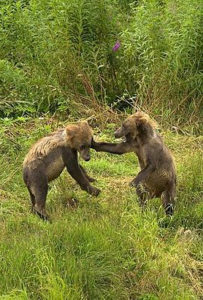 play itself is not only useful but primally so. The very uselessness of the activity itself must mean that the state of mind is somehow crucial for us mammals, or it would have been weeded out by evolution long ago. He introduces husband-wife research team Johanna and Robert Fagan who studied play in grizzly bears. The Fagans found that the individuals who played the most were the most effective at surviving.
play itself is not only useful but primally so. The very uselessness of the activity itself must mean that the state of mind is somehow crucial for us mammals, or it would have been weeded out by evolution long ago. He introduces husband-wife research team Johanna and Robert Fagan who studied play in grizzly bears. The Fagans found that the individuals who played the most were the most effective at surviving.
Why would play lead to a better chance of survival? It has everything to do with that organ in your skull. Neuroscientists Sergio Pellis and Andrew Iwaniuk and biologist John Nelson figured out that there’s a link between relative brain size and playfulness. They looked at the brains of 15 species and found that species with larger brains (relative to their body size) played more. Even more intriguing, John Byers has carefully studied several species— while more research is needed, Byers believes play allows mammals’ brains to make sense of and “sculpt” themselves.
For me, and perhaps other readers with a feminist bent, one of the most provocative parts of Brown’s book and argument is his rendition of the well-known Marian Daimond research on rats growing up in an ‘enriched’ environment. What made for an enriched environment? Toys and companions, in other words, play. Diamond figured out that the rats who played the most developed bigger, better (more complex) brains. “’The combination of toys and friends was established early on as vital to qualifying the environment as ‘enriched…’” So why did Diamond call these rats enriched instead of playful? “‘Back in the early 1960s, women had to struggle to be taken seriously as scientists,’ Diamond said. ‘I was already seen as this silly woman who watched rats play, so I did avoid the words ‘toys’ and ‘play.’“
Brown says, far from being silly, whether we are talking about young or old mammals (including the human kind) “The truth is that play seems to be one of the most advanced methods nature has invented to allow a complex brain to create itself.” In a misogynistic culture, it doesn’t take a big logical leap to move from the denigration of children spending time playing with the women whose days most often pass in overseeing and engaging in this child’s play to the denigration of grown-ups spending (wasting) time doing anything that resembles those women and children, outwardly or emotionally.
Think the kids whose parents can afford one high dollar league or lesson after another have an advantage? Not according to Brown. It turns out that, in denigrating play, especially the unstructured kind, we might have been setting ourselves up for underdeveloped, less creative and effective adult brains, both cognitively and socially.
Why is unstructured play important? The need to make up and sort out “rules’ appears to be a necessary ingredient for helping us develop a sound moral foundation and key capacities like impulse control. The purported lack of unstructured play in many youngsters’ lives does not bode well for their future functioning.
I think about my own play history. By all measures, I was and am a person with a wicked case of ADHD but it never quite got in my way. Which means, despite being able to check off almost all of the symptoms, “disorder” is a misnomer. I experience myself as requiring a different, more frenetic, variable, and physically focused sort of order and I somehow managed to come up with work-arounds and avoid pissing off all the grown-ups.
Now, I grew up solidly middle class with a single-mother who earned a decent family income. I had enormous privilege as a child. No doubt my mother’s Rousseauian, let-the-kid-be-who-she-is attitude helped with self acceptance. But I’m convinced it was the application of her parenting attitude combined with the freedom to run and roam alone and with friends, sometimes traipsing miles through the woods near my suburban home as we honored our urges to learn and imagine and move together. That was probably what saved me. The skills I accidentally developed helped me understand how to escape ostracism and trouble by coming up with ways to accommodate most of the important rules and my own uncontrollable impulses towards movement, challenge, action, stimulation, and adventure. Brown doesn’t touch on income, access, and racial differences, and I know full well how fortunate I was to have those woods behind my tract house in the suburbs. But, if Brown is right, regardless of other challenges, less adult-supervised soccer and more pick-up games or fort building and imaginative play time in safe parks and patches of woods with no grown-ups anywhere might be good for us as individuals and for society as a whole. Access to places for children to move their bodies together, to explore, discover, and lose track of time in unstructured play starts to look like a basic human right.
Maybe you’re convinced that play is good for developing children’s brains but still feel suspicious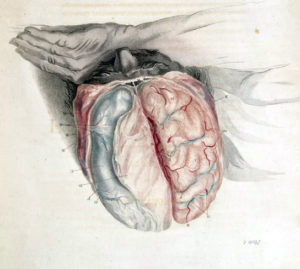 of playful adults? After all, our adult time is valuable (read remunerated) in ways children’s can’t be. Brown lays out the facts of our brains. Unlike many mammals, we have an exceptional capacity for brain development and neurogenesis (making new neurons) over the whole of our lifetime. While children definitely have a need for more playtime than adults, we are, according to him, evolutionarily engineered to need life-long play in order for our brains to continue to grow and develop in the ways that keep us happy and healthy. He says “the opposite of play isn’t work.” It’s depression.
of playful adults? After all, our adult time is valuable (read remunerated) in ways children’s can’t be. Brown lays out the facts of our brains. Unlike many mammals, we have an exceptional capacity for brain development and neurogenesis (making new neurons) over the whole of our lifetime. While children definitely have a need for more playtime than adults, we are, according to him, evolutionarily engineered to need life-long play in order for our brains to continue to grow and develop in the ways that keep us happy and healthy. He says “the opposite of play isn’t work.” It’s depression.
He argues that finding play-states at or during work makes us better workers and that play is, in fact, “essential” to doing the highest quality work. He recounts the play histories he took of two Nobel laureates, neuroscientists Roger Guillermin and polio researcher Jonas Salk. Brown writes ”I realized that what they were doing every day in the laboratory was playing. When Roger took me through his laboratory he was like a kid as he described his experiments… Their play was esoteric and difficult to understand for most people, but activity and the joy were the same as they would be for a kid in a sandbox.”
And then Brown drops what I found to be a beautiful prompt for anyone feeling stuck in finding or deciding on a new direction for their work life. “The work that we find most fulfilling is almost always a recreation and extension of youthful play.”
I can hear the protests now (because I’ve heard them so often, many times in practiced, full-throated, choral unity as my inner demons opened up to unleash a new wave of self doubt). Play is fine for some people but most of us have to settle down to the grim business of boring adult reality. And, let’s face it, the houses, roads, and office buildings, the passive entertainment and scales of efficiency and all of the other infrastructure we’ve built have not been designed to maximize our capacity for play, for utter delightful absorption in and satisfaction with the present moment. In many cases, they’ve been designed, intentionally or not, with effects that are quite the contrary. Much of our built environment maximizes our capacity for wanting more which, in our boxed-in longing, we often interpret as a wish to purchase more amenities for the cages that limit our creative vision and movement in the first place. The amenities we pay for in money (abstracted life time) rarely change our longing in any enduring way and the cycle of working to not meet our needs continues as the days come and go and we remain, in John O’Donohue’s words (see Play Time part 1), victims of time. Brown takes a shot at understanding where some people get stuck and where some of the angry resistance to prescriptions of play come from. “When some unhappy people hear the message about the importance of play,” he writes “they get angry and defensive, realizing what they’ve missed.”
He’s careful to point out that you don’t have to quit your job or become a Nobel laureate. Even just occasional play might help get you reacquainted with the feeling and could, with practice, become habit-forming. So how do you cultivate a state of play? If Brown is right, play can happen under many circumstances and according to individual preference but there are some that are particularly conducive.
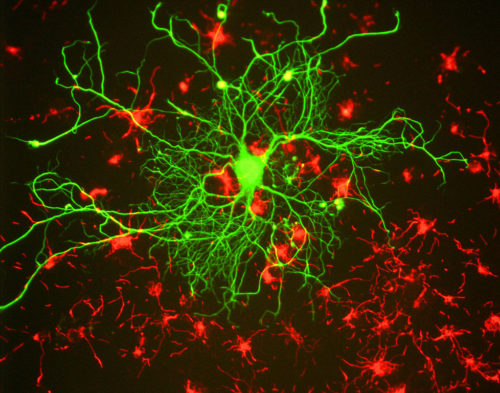
Moving your body in playful ways (dancing, racquetball, drumming or dancing with gusto) “lights up the brain and fosters learning, innovation, flexibility, adaptability, and resilience. These central aspects of human nature require movement to be fully realized. This is why, when someone is having a hard time getting into a play state, I have them do something that involves movement: because body play is universal. As Bob Fagan says, ‘Movement fills an empty heart.’”
One of the impulses that led me to undertake the Waves to Wisdom project is a deep intuitive 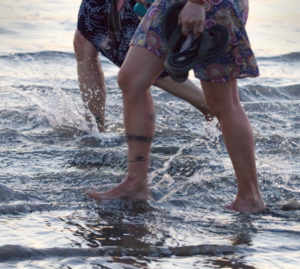 knowledge, developed through years of experience, that combining some intention and guidance with what Brown calls “movement play,” particularly when it takes place in or near the water, has the potential to deepen the meaning people perceive in their lives and to rehabilitate our relationship to our own time. Play can allow us to rediscover that each day has the potential to be filled with kairos, not just paced off in chronos.
knowledge, developed through years of experience, that combining some intention and guidance with what Brown calls “movement play,” particularly when it takes place in or near the water, has the potential to deepen the meaning people perceive in their lives and to rehabilitate our relationship to our own time. Play can allow us to rediscover that each day has the potential to be filled with kairos, not just paced off in chronos.
For so many of us, the combination of reflection, a few challenging existential questions to ponder, some low-stakes creative undertakings, and ocean play can prompt new metaphors that synchronize previously competing urges, reveal inspiring juxtapositions and connections between seemingly separate facets of our one life. Immersion, literal and figurative, in this sort of play can change previously petrified, self-limiting beliefs about what is possible. Play in a higher power (like the ocean) offers embodied experience and guiding metaphors that render those limiting beliefs fluid or dissolves them entirely. Sometimes people come out of these experiences with a dramatically new idea for their lives or work. More often they find layers of potential for meaning and joy, for really living their day and night times. They see and articulate meaning and purpose that have coursed through their lives all along, unnoticed or unappreciated. Brown sketches out what our brains have to gain. While there’s no guaranteeing precisely what each person who plays deeply will come away with, we know what they have to go in with, an internal motivation.
He writes, “Authentic play comes from deep down inside us. It’s not formed or motivated solely by others. Real play interacts with and involves the outside world, but it fundamentally expresses the needs and desires of the player. It emerges from the imaginative forces within. That’s part of the adaptive power of play; with a pinch of pleasure, it integrates our deep physiological, emotional, and cognitive capacities. And quite without knowing it, we grow. We harmonize the influences within us. Where we may have felt pulled in one direction by the heart and another direction by the head, play can allow us to find a balanced course or a third way.”
I understand. It isn’t easy.
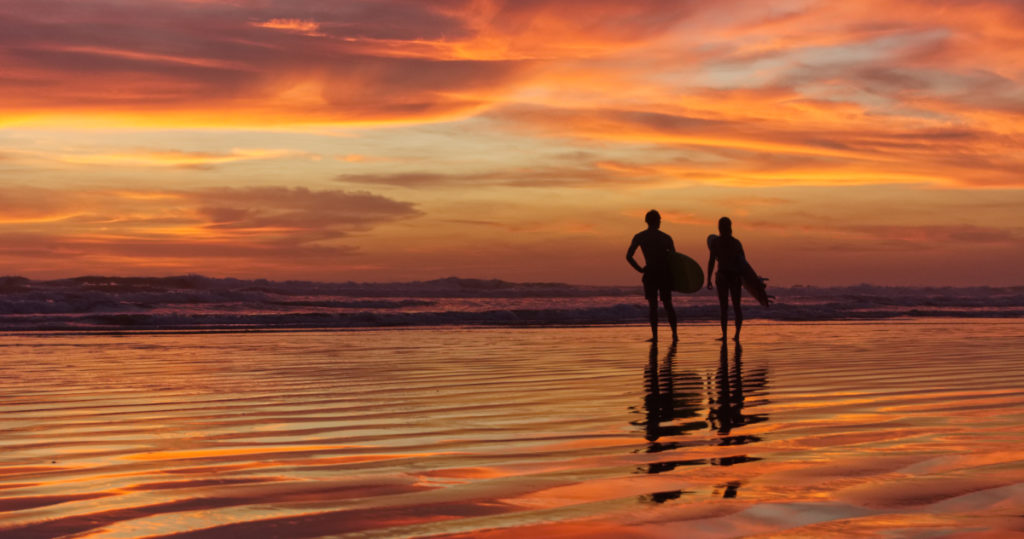
One of the reasons I and so many others spend a chunk of our chronos here, in this jungle village where I’m writing the final draft on a dusty keyboard as sweat drips from me in the dead of North American winter, is the kairotic potential of this tropical place. Take those sunsets. Most of us are, wait for it, out there without our phones. Now, you still see plenty of humans curved down over their gadgets but, just as often, those who did bring phones are looking up, necks arched to hold heads high, to take in something beyond the screen. Often those screens are then lowered, the photographer giving way to the subject, surrendering neither to the bound, segregated sensory world of the phone camera’s view, nor to the seconds and minutes that too often tell us whether it is time to eat, to rest, to love. I see it every day that I take my own camera out there, the other photo snappers putting the phone down for awhile and letting their awareness move with the planetary rhythm of time, of changing light. I see them lose track of it all and let their senses come alive in connected response to the shifting of what’s beyond. You can almost see the barriers dissolve— we lose a little of the lonely existence of individuals and join with Others out there, human and aquatic, biological and geological, planetary and cosmological. Sometimes they (and I) photograph out of that feeling or try a new maneuver on our surfboards that, if we pull it off, will send an arc of spray up in the lovely light, or we swing our children into the water or bring them to tide pools to give them the richest life imaginable. And then sometimes we just stand there and feel it, alive in our own bodies and their time, letting all of our senses and our unfolding history flow into our vision. And if we do make a beautiful photograph, or execute a new maneuver on a surfboard, or elicit unbridled laughter from our child in the midst of that moment, well, as far as I’m concerned that is at the heart of what art at it’s best is all about anyway.
The belly of the high cirrus cloud bank that descends from just above the setting sun down to the point at the north end of this Pacific bay has just started to go pink. All day I’ve watched the clouds in the sky, rare in this season. I’ve hoped some would remain as I measured the day’s events by the coming time for me to I bring the camera down for immersion in the warm evening light-bath. The sun has receded behind the ocean now and a pink stroke of cirrus in the sky saturates as the light is bent by the atmosphere, only allowing the longer, redder, warmer wavelengths through, making them take their time to get to us and our eyes, now all pointed in one direction on this beach. A rippled, ascending cloud is reflected in the wet sand, now exposed by the receding tide, the closest thing the ocean might have to a second hand. The horizon between these pink diagonals now forms the shaft of an arrow pointed towards what my eyes perceive as gathering obscurity in the darkening east. The light during and after sunset often brings me to some emotional shore where tears wash onto giddy laughter and, judging by what I see around me on the beach, I’m not the only one moved by the spectacle, not the only one whose time has been touched. When the last point of the orange sun disappeared below the line of the distant ocean, people applauded.
I-Ocean: Part 1
I-Ocean: Ideas for a good life from Ethan and Martin
Part 1
In the years I’ve been acquainted with Ethan Crouch, he’s always struck me as a person whose life has exceptional integrity. His broad, bearded smile is quick and welcoming, as optimistic as the the ancient Ford Bronco that waits open-windowed and unlocked while he surfs. He clearly loves riding waves but his habit doesn’t have the smell of escape. He seems just as motivated and fulfilled in the work life that takes up most of his days, and in being a leader in Surfrider, an activist network that occupies another substantial chunk of his time. So many of us believe our lives are built of discreet, even disparate spheres we have to work to balance or, worse, juggle. Not Ethan. It’s one of the reasons I was thrilled he agreed to a Waves to Wisdom interview.
Near the end of our conversation, he cited Martin Buber’s work I and Thou as one of the crucial philosophical influences on his life, not just as an undergraduate studying philosophy, but in his current manifestations as an open hearted but determined activist, a successful business owner, and utterly stoked surfer. Listening to our interview, you know Ethan Crouch works hard. You hear the joy he derives from what he calls his foundational practice of finding connection through surfing. Ethan has spent his adult life building on that practice and, in the process, found integrated connection with his community, his values, and his life path.
From my perspective, a crucial part of the Waves to Wisdom project is learning from the nimble, creative, open-minded acceptance that surfing demands. Building on those wave-born habits when I’m dry and landlocked, I look for ways to offer to others what I glean from these hard won lessons. That means staying open to any wisdom that surfaces from the waves and this last interview left me feeling like Martin Buber was, clearly, calling.
Part of the clarity arose from the familiarity of Buber’s name. Martin Buber has been a favorite of some of the most brilliant, passionate, and loving members of the community of Quaker-influenced educators and students I worked among for 17 years. It was among this group that it first occurred to me that perhaps I needn’t be afraid of Christians, a prejudice I feel mostly freed from. To be clear, Buber was Jewish but his work is perpetually popular among a subset of Protestants, including many Quakers.
My own spiritual orientation is somewhere in the neighborhood of aspiring animism although, like almost every single other person I know, or have ever known, I’m culturally, hopelessly monotheistic — forever looking for the one true source or method or path toward truth. It took me a long time to really feel the wisdom of what I believe Ethan means when he says that truth is like water, when you try to hold it in your hands it just squeezes out.
I knew Buber might be a challenge for me but I hoped I’d be open enough to learn what Ethan found so powerful and, perhaps, find something I could keep and then share. Some enduring practice or pattern in his ideas about the sacred and how to cultivate it in our workaday lives. After all, that sort of habit, of nurturing the capacity for powerful connection to perspective and purpose is precisely the point of Waves to Wisdom.
Plus there was Ethan. His business’s LinkedIn page reports that they have a “passion for scheduling.” In my mind, passion and scheduling go together like hot fudge and scaffolding… huh? I had things to learn. This fellow student of salt spray clearly has some priorities figured out and if Buber helped him get there, I wanted in on it.
I took a deep dive into this difficult little book, I and Thou, and will post something more substantial about in a couple of days. In the meantime, I can recommend it to anyone who’s interested in being challenged by ideas and language that is perplexing, beautiful, and occasionally revelatory. I was grateful for my own late life capacity to accept that Buber’s explicitly religious language might offer something of relevance to my own ocean-centered existence and passion for providing inspiration and guidance to others.
According to Buber’s translator, Walter Kaufmann, one of Buber’s accomplishments is endowing the social sphere with a sacred dimension. It doesn’t take much mental steam to see that our social sphere could use a lot more of that dimension right now. A great book is a great teacher and, as is that case with all the great teachers, the subject of the lesson is life.
Kaufmann writes:
“A good book or essay or poem is not primarily an object to be put to use, or an object of experience, it is the voice of You speaking to me, requiring a response.” (p.39)
This “You” is sacred and, in some sense, divine. Some might even say it’s God. I wouldn’t, and it was a bit of a struggle for me when Buber did. Kaufmann acknowledges that it might be better not to use religious terms “because they are always misunderstood,” and then issues an assignment.
“We need a new language, and new poets to create it, and new ears to listen to it. Meanwhile, if we shut our ears to the old prophets who still speak more or less in old tongues…we shall have very little music… Let him that has new ears listen to it in a new way.” (p.31)
More than any other force in my life, the ocean has offered me new ears.
I’m listening.
Maia on WUNC June 11
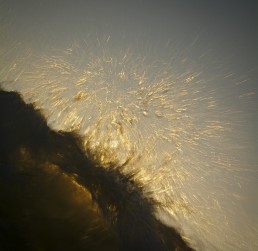
Hello friends!
On Monday, June 11th I was honored to be the guest on The State of Things with Frank Stasio, talking about Waves to Wisdom and whatever else he cared to discuss. I’m completely grateful for this opportunity to share some ideas and practices with WUNC’s wonderful audience!
If you couldn’t listen to the live show on your local NC NPR station or wunc.org check it out here.
Solstice Season
Solstice
Having gone through the looking glass that deposited me in the role of one-who-dispenses grades, these long nights, when peanut butter and chocolate taste SO MUCH BETTER than when it’s warm out, offer a chance to take a long look as how much focus we ask ourselves to put on what is vanishingly unimportant. I’m surrounded by manufactured stress, when we could be crafting meaning and love and beauty, tapping abundant aquifers of purpose. Stricken with thirst, our ladles frantically slicing the air in all directions, we feel pushed to ignore the deep wells of our own development and learning, and our most profound creative offerings. All this in favor of preparation for some illusory future that will somehow be more “real.” Preparation, when it isn’t Practice, is pointless. All of these things we “spend” our lives on are our lives. Even the most transactional transactions, matter or energy, all are our own waves crashing on sand, beautiful, powerful, then gone back to the source.
In the beginning of heaven and earth there were no words,
Words came out of the womb of matter;
And whether a man dispassionately
Sees to the core of life
Or passionately
Sees the surface,
The core and the surface
Are essentially the same,
Words making them seem different
Only to express appearance.
If name be needed, wonder names them both:
From wonder into wonder
Existence opens.

